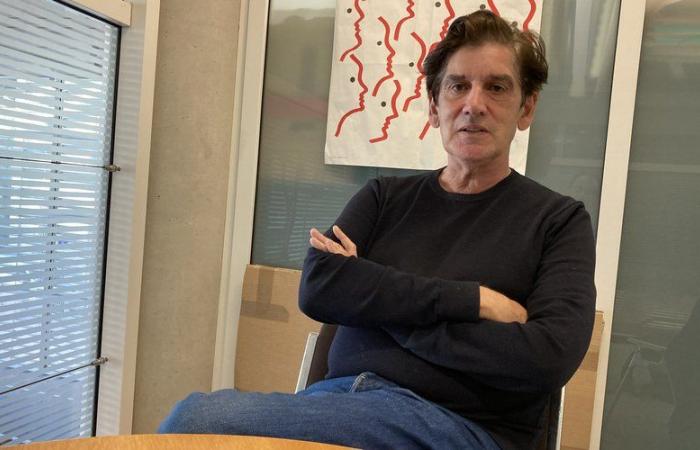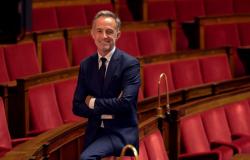
Director of the Carré d’art contemporary art museum in Nîmes, Jean-Marc Prévost is leaving his position at the end of November.
What are your feelings when leaving the management of the Carré d’art museum?
It’s a story of cycles. I find it interesting to be in a place, to know that you are not going to stay there, but that you are there for a project. I’ve been there for 12 years, I’ve never stayed in a position for more than 10 years. It’s good for the person and it’s good for the place too.
What assessment do you make of these years?
Carré d’art is a quite exceptional museum, which has a history with its collection and all the artists who have passed through it since its creation. I tried to reinforce this story with choices that were mine. I really thank my two presidents, Daniel-Jean Valade and Sophie Roulle, who have always trusted me and supported me in my projects, it’s a chance.
In the pursuit of this story, there has been work around the Mediterranean…
It was an axis that I chose. We are a contemporary art museum, which does not have a universal vocation like Beaubourg which tries to cover the whole world. There was a Mediterranean axis, with Italian and Spanish art. I knew Middle Eastern art well, I opened the collection to that world thinking that it was quite legitimate, given our geographical location, but also because it is a part of the world with artists really interesting.
The collection has grown considerably in recent years…
It’s true. Our budget has not increased but the collection has grown. I have always been keen to buy artists who were not represented in French public collections. Knowing that I do not have unlimited means, I chose certain artists and put together groups of works, rather than sampling.
We are also lucky to have many donations, often linked to exhibitions. These are often very expensive artists on the art market, whom we cannot afford to acquire. Ugo Rondinone, but also Walid Raad, Anna Boghiguian who gave half of her exhibition.
Some artists were presented here first like Tarik Kiswansson. We bought works, we helped produce them, but he also gave important works to the museum, which he did not want to sell to collectors.
You have to buy at the right time, before the art market picks them up…
For example your first acquisition, Etel Adnan…
We bought the paintings very early, now the prices are irrational. It’s a reality of the art market and it’s complicated. When I started working, everything was much slower. Now everything is going very quickly.
In this context, how can a museum exist in the face of large foundations?
We do not have the same financial powers. But the museum has its role to play today. Artists, who have a political position in the noble sense of the term, realize that a museum does not have the same mission as a foundation. More and more, they have this desire to donate works. It’s quite recent, but they know that a foundation can resell, whereas museum collections are inalienable.
We are at a moment where museums are viewed favorably by artists, both for exhibitions. A museum like Carré d’art is courted by large international galleries, rather Anglo-Saxon, who would like to show their artists there.
In your work, there has also been, alongside major exhibitions, the multiplication of more modest projects…
It’s linked to the building, the rooms are very large on the top floor. You need an artist who can occupy such a large space, who has the breath. The project room made it possible to show forms of works that would not have had the possibility of being perceived correctly in the large spaces of the third floor.
The Jesuit chapel is a magnificent space, it makes you want to use it! It’s very beautiful, especially for video installations.
You have regularly exhibited artists who explore movement, work around dance…
My first exhibition, at the direction of the Marseille museums, was called “Dance traceée”. I was trained in dance very early on, it’s something that interests me a lot. I was able to develop it with this major exhibition on minimal art and post-modernism, with important figures like Simone Forti, Emmanuelle Huynh, Noé Soulier.
We also did things in terms of performance. We were the first to show Anne Imhof, who is a star now. Artists love using Carré d’art as a stage. I hope that the next director will be able to work with the theater to develop things, I am leaving at the moment when this is getting underway.
Before leaving, you have already scheduled some exhibitions…
I have made a program for the year 2025. It will be the year of Brazil. A young artist, Lucas Arruda will occupy the upper space. He is a painter, who is in large galleries like David Zwirner, who also makes video installations linked to light.
In the project room, there will be an artist who died, Ivens Machado. He had political commitments in the 1970s during the dictatorship in Brazil and he did a lot of important sculpture work linked to the body.
In the fall, Carré d’art will exhibit an artist who is in the collections, Felipe Romero Beltran, a photographer of Colombian origin who lives in Paris. It will be a collaboration with the Madrid-based Mapfre foundation.
Are there already many candidates for your succession?
Yes, that’s good news, it means that it’s a museum that makes you want to visit. Applications come from Houston, Texas to Nîmes.
In this building, what are the constraints and advantages?
These are white cubes, it’s a very American museum. It’s a nice tool. What interested me above all was that it was central and that like Beaubourg, there is a library, a restaurant, it is a lively place.
Then we adapt. I worked in a medieval castle when I was in Rochechouart and I found it very pleasant. Here, it’s the opposite.
The third rooms are quite monumental and this requires a certain type of work. Some artists couldn’t work. This requires thinking carefully about who you invite.
Recently, the museum celebrated its 30th anniversary. A culture of contemporary art has permeated the city?
Over time, people have gotten used to it, plus the museum is central. There are a lot of schools. We notice in the applications that there are several former Nîmes applicants. For the 30th anniversary, we had a film where we found people from Nîmes who work in the art world in New York or elsewhere, and who were marked by an aesthetic shock. It changed their lives to come to Carré d’art!
What advice would you give to the person who will arrive?
What’s interesting about a place like Carré d’art is that we’re not in a big structure. You have to maintain the freedom to discover things and program them quickly. You have to take advantage of the flexibility of the structure. The trust of elected officials also makes it possible to do programming that is different from what is done elsewhere.





